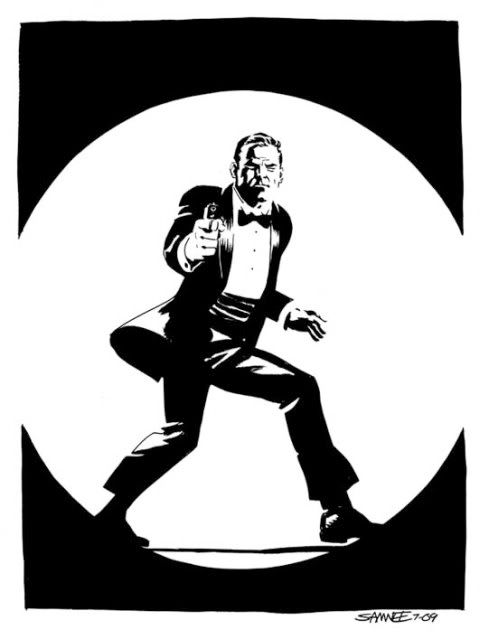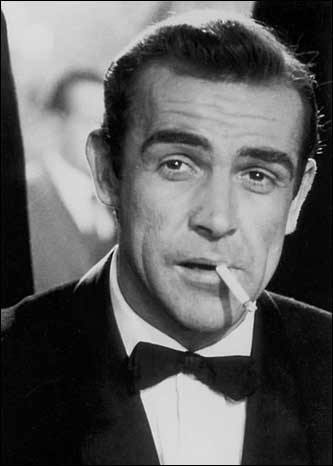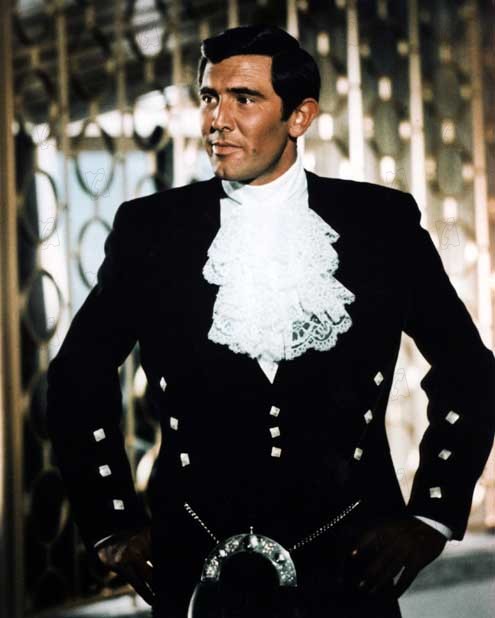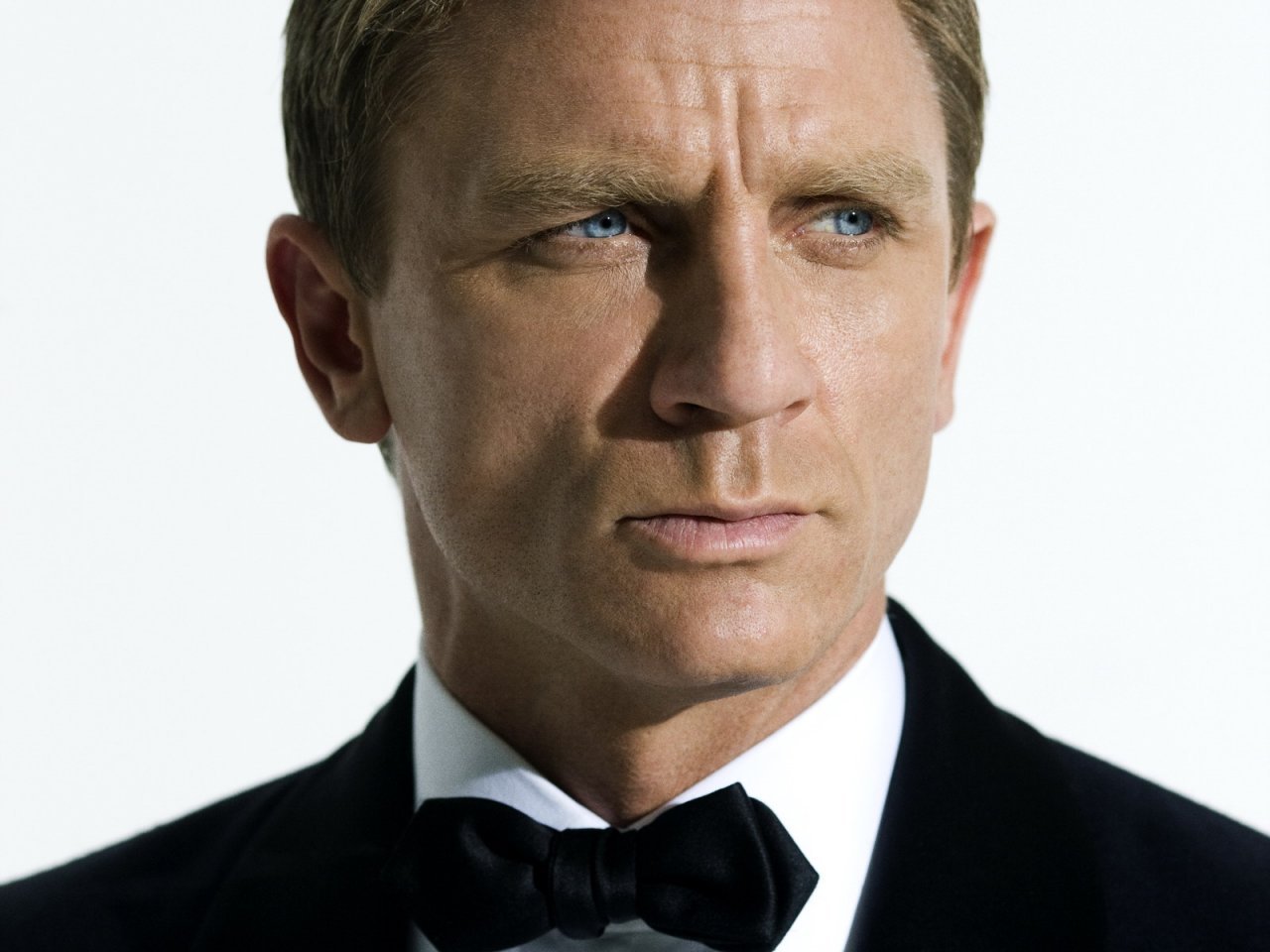
Fleming's lover Ann Charteris was about to become Mrs Fleming. She was pregnant and Fleming needed money quickly. He was also trying to take his mind off his terror of matrimony.
The world's most popular spy, the debonair and sexually promiscuous 007, was partly born out of fear and sexual frustration.
As Fleming's biographer Andrew Lycett puts it, Charteris was "hors de combat", (out of action) sexually. She was being especially careful because their first child, Mary, had died eight hours after a premature birth.
"Ian had time and energy on his hands." He threw himself into the novel he had been thinking about for a long time. Casino Royale was finished by March 15, and the couple married a week later, with Noel Coward at their side.
 It was a fitting start for a character who has done more than any other to keep the British flag flying, so to speak.
It was a fitting start for a character who has done more than any other to keep the British flag flying, so to speak.The 23rd official Bond film, Skyfall, opens in November with Daniel Craig back for a third time and Javier Bardem as the villain. Judi Dench returns as M, of course.
The Bond films are nothing if not dependable, and this is part of the reason for their success.
Except for a few minor variations, there was a new Bond film every two years from 1965 to 1989. You could set your Rolex Oyster Perpetual by them.
They have slowed in recent years, since the death in 1996 of Albert "Cubby" Broccoli - the initial producer, in partnership with Harry Saltzman.
The empire is now run by Barbara Broccoli, his daughter, and Michael G. Wilson, Cubby's step-son. The Bond franchise is the most successful in film history.
It is apparently indestructible, surviving bad casting, bad scripts, bad directors and bad times, not to mention 50 years of bad one-liners.
"Shocking," said Sean Connery, after he killed a bloke by throwing an electric heater in his bathwater in Gold-finger (1964), the third movie.
The cheesy lines are part of what we love about 007, along with the fact that he never gets old, always goes five-star, always gets the girl (they are never called women), and has access to all the best stuff before it's even on sale. The combination is powerful, even across gender, race and age.
His flaws do not trouble his loyal subjects.
He's racist, but well-loved in China, Japan and India, whose cultures he has regularly offended; he's sexist, but almost every feminist I know thinks Sean Connery and Daniel Craig are dishy. Some would argue that a few of the Bond girls are feminist icons, especially in recent times.
 For much of his life on film, he has been a Cold War dinosaur, but he is accepted in Russia, with love. At the same time, he has been damned from birth, even before the films.
For much of his life on film, he has been a Cold War dinosaur, but he is accepted in Russia, with love. At the same time, he has been damned from birth, even before the films.British poet and critic Bernard Bergonzi, writing in 1958, railed against the "marked streak of voyeurism and sadomasochism" in the books, and the "total lack of any ethical frame of reference".
Film historian Robin Wood compared Gold-finger unfavourably with Hitchcock's North by Northwest: "The essential triviality of the James Bond films, in fact, sets off perfectly, by contrast, the depth, the charm, the integrity of Hitchcock's film."
These two are on to something, but for the wrong reasons. I would argue that the Bond films are successful precisely because they are voyeuristic, sadomasochistic, shallow, trivial and lacking the kind of integrity Wood wanted.
They offer a mid-20th century fantasy of freedom from everything: responsibility, marriage, fatherhood, poverty, drabness, suburbia, morality, ageing, thinking, worrying, sobriety and the 7.55am to Piccadilly, Town Hall or Grand Central.
North by Northwest is about the nightmare of a man losing all certainty, when Roger Thornhill (Cary Grant) is kidnapped from a New York hotel by mistake. The Bond films are about the blissful pleasure of not wanting safety and certainty in the first place.
Bond does not want marriage, any more than Fleming did. He does not enjoy sadomasochism quite as much as his creator, who shared a fondness for "roughage" with his beloved Ann, but Bond likes spirited women who need "persuading".
As Pussy Galore in Goldfinger, Honor Blackman offered the ultimate challenge: she was a lesbian, or wanted him to think she was. "You can turn off the charm - I'm immune." Sure, Pussy. They ended up literally rolling in hay.
Bond lives on the edge of society, peripatetic, untethered and untamed. His job is defence of the realm and he is essentially a political conservative (much more so in the books), but his spirit is bohemian.
 The rules of society are for other people, not him.
The rules of society are for other people, not him.That has a long tradition in the British adventure story from which Bond descends, in a straight line from Sherlock Holmes, through Richard Hannay, Bulldog Drummond and Simon Templar.
These others, after Holmes, were less free-spirited. Perhaps because of the war, in which Fleming had a marvellous time as an officer in Naval Intelligence, Bond was both ruthless and refined, an odd mixture. Fleming saw David Niven as the ideal actor to play Bond: suave, debonair, dashing.
The producers of the films wanted someone with more mongrel. Sean Connery, a Scottish bodybuilder, was thought to be too vulgar and working-class for Fleming (although this has been disputed).
The movie Bond comes from a decade later than the literary Bond, and he emerged when Britain was changing. The class system was crumbling, assailed by angry young playwrights and novelists; the prudish moralism that went with class was also being relaxed.
Sleaze king Paul Raymond opened his first strip club in London in 1958.
Though they were American and Canadian by birth, Broccoli and Saltzman had lived in England for some time, and knew how the class system worked. Connery's Bond was the perfect hero for the times: a virile buccaneer with a veneer of sophistication, but essentially classless.
 That last bit was crucial, because it carried Bond to the biggest market in the world.
That last bit was crucial, because it carried Bond to the biggest market in the world.Most American action heroes, then and now, have been working-class men. Connery's Bond had the body of a fighter and the manners of a British Naval officer, a gentleman warrior.
That part was pure Fleming; the number of times we saw Connery without his shirt in the first five films was pure Broccoli.
Still, none of this fully explains the success of the film franchise. It can't all be built on Connery's pectorals and bushy eyebrows.
Much of it comes from clever handling of a valuable property, the business acumen of Broccoli and Saltzman. When they took the idea to Columbia Pictures, they asked for $1 million to make the first film.
In typical fashion, Columbia low-balled them, suggesting a low-budget genre picture. Arthur Krim at United Artists was more receptive - they got the bigger budget, and budget has made Bond beautiful ever since.
Money allows for big stunts, big stars, big sets, exotic locations; it meant better writers and directors, and it paid for John Barry's great scores.
The marketing of the films has always been creative and lavish. John F. Kennedy announced that he was a Bond fan, even before Dr. No came out.
The Kremlin and the Vatican both condemned that movie, so people knew it had to have something. Sales of the books rocketed. From 1962 to 1967, Bond sold more than a million paperbacks a year in Britain alone.
With From Russia with Love, the second film, merchandising became big business, long before Star Wars.
US censorship rules were broken in 1961, with Splendor in the Grass.
 Bond followed into the breach, capturing the zeitgeist - sexual liberation, sunshine, fast cars, hedonism and atomic paranoia. Dr. No premiered in Britain on October 5, 1962, nine days before the Cuban missile crisis.
Bond followed into the breach, capturing the zeitgeist - sexual liberation, sunshine, fast cars, hedonism and atomic paranoia. Dr. No premiered in Britain on October 5, 1962, nine days before the Cuban missile crisis.Bond carried a powerful message: drink Dom Perignon '53 now, because we might all be dead tomorrow.
The books and films were fashioned from the start as an Anglo-American partnership in intelligence, politics and audience tastes.
Bond is quintessentially British, as we know, but he behaves at times as though the CIA works for him, usually through his demands on Felix Leiter, the CIA man who has a different face in every film.
British and American intelligence are on the same side in Bond films, and they have complete trust.
That's one of the great ironies, given that Burgess and Maclean had defected a few months before Fleming started writing.
That was one of the things that drove his pen: he wanted to restore the alliance with a reassuring character that the Americans would trust, even if only in fiction. Bond was as cold as a Cold War warrior could be.
 Americans found he was their kind of Brit: he liked big guns, fast cars and girls with big assets. He was prepared to die to save Fort Knox, goddammit. Hollywood distrusted Limeys before James Bond; they had millions of reasons to love him after Dr. No.
Americans found he was their kind of Brit: he liked big guns, fast cars and girls with big assets. He was prepared to die to save Fort Knox, goddammit. Hollywood distrusted Limeys before James Bond; they had millions of reasons to love him after Dr. No.It says much about the resilience of the character that he has survived the end of the Cold War and the rebranding through six different actors, using the term loosely in the case of Australia's George Lazenby.
The series is endlessly reinventing itself, relentlessly modernising its outlook without changing the overall structure. The one great lesson of the Bond franchise is that originality is overrated.
Many of the films are mind-numbingly similar in plot but there is room for great variation and improvisation, from Michelle Yeoh's athletic brilliance in Tomorrow Never Dies to Herve Villechaize as Nick Nack, the tiny but deadly offsider in The Man with the Golden Gun.
The Bond films are like jazz, in that they are about improvisation on a predetermined structure. Sometimes the jazz is more Mantovani than Monk, and sometimes you get John Barry at his best.
Sometimes the martini is shaken, sometimes it's stirred. Either way James Bond has remained youthful and popular for five decades on film.
It's a remarkable achievement.
-------------
http://www.stuff.co.nz/entertainment/film/7464377/James-Bond-at-50
http://media.photobucket.com/image/recent/chrissamnee/Bond-1.jpg
http://cache.boston.com/bonzai-fba/Third_Party_Photo/2005/10/14/1129299607_8477.jpg
http://www.filmgo.net/Portals/0/franchises/james%20bond/roger-moore-james-bond-c10102569_jpeg.jpg
http://aswedetalksmovies.files.wordpress.com/2012/04/lazenby.jpg
http://3.bp.blogspot.com/_XiP0IInl2fk/TUv7J89OqhI/AAAAAAAAAr0/5qul7G7NKTQ/s1600/james_bond_timothy_dalton.jpg
http://yupall.com/wp-content/uploads/2011/09/james-bond1.jpg
http://images2.fanpop.com/image/photos/9600000/Quantum-of-Solace-james-bond-9614447-1280-960.jpg


No comments:
Post a Comment